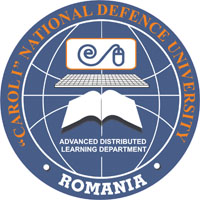COLLABORATIVE VIRTUAL ENVIRONMENT FOR PRODUCT DEVELOPMENT MANAGEMENT
COLLABORATIVE VIRTUAL ENVIRONMENT FOR PRODUCT DEVELOPMENT MANAGEMENT
Author(s): Ion CIOCAN, Manuela-Roxana DIJMĂRESCU, Dragos Iliescu, Marian GheorgheSubject(s): Education
Published by: Carol I National Defence University Publishing House
Keywords: Virtual Organisation; information technology; collaborative framework; Product Data Management; Product Lifecycle Management
Summary/Abstract: Virtual Organisation concept became more and more important for the today’s technology and business development. Due to the achieved information technology level, processes for design, design refining, simulating, testing and manufacturing management should reach an important collaborative characteristic. Advantages of the concept are important in order to obtain process effectiveness and efficiency. The traditional approach, so called the waterfall process, even offers a secure path to final result, do not offer the expected efficiency in a complex environment. It is expected that redundancies, changes in the design or even non-conformities in manufacturing, to disturb the normal progress of a waterfall process. The paperwork describes a virtual environment to simulate a complex collaborative framework, it is based on the implementation of the Product Data and Product Lifecycle Management concepts, the proposed web databases distributed architecture being the framework for the needed communication infrastructure. Different informational models were used within the framework in order to simulate the processes of management within the enterprise, and between enterprises, as components of Virtual Organisation as well. The simulation framework is intended to be installed in "Politehnica" University of Bucharest and will serve for students training as close as possible to a real complex engineering and manufacturing environment. The framework will support the students to solve different tasks: design, CNC programming, machine and tool warehouse management, as the main activities considered, but the list is not limited here. Other modules can be added to the framework so that an even larger spectrum of activities to be present within the framework.
Journal: Conference proceedings of »eLearning and Software for Education« (eLSE)
- Issue Year: 11/2015
- Issue No: 03
- Page Range: 35-42
- Page Count: 8

